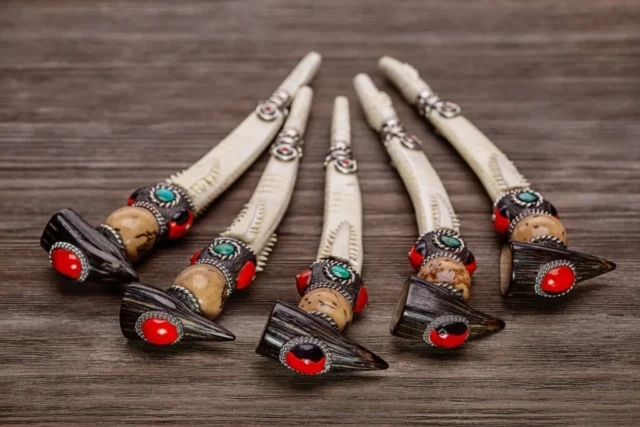When the late Lakota elder Basil Brave Heart filled his chanunpa (sacred pipe) with cansasa (ceremonial tobacco), he was not just smoking; he was weaving a bridge between earth and sky. For Indigenous nations across Turtle Island, tobacco is a living relative, a medicine, and a diplomat. Far removed from commercial cigarettes, its traditional uses sustain spiritual, ecological, and communal balance. Let’s explore why this plant holds profound cultural significance and how communities protect these traditions today.
Sacred Smoke: More than a plant.
You won’t find ceremonial tobacco in convenience stores. Unlike its mass-produced counterpart, traditional varieties like Nicotiana rustica are cultivated with prayer, often mixed with herbs like sage or cedar. But here’s the thing: it’s never about consumption. The act of growing, preparing, or gifting tobacco creates a tangible connection to the land. As Dr. Jessica Hernandez (Zapotec and Maya Ch’orti’), an Indigenous environmental scientist, explains: “Traditional tobacco is a teacher. Its cultivation embodies resilience and how our ancestors safeguarded seeds through colonization.”
Respecting the ritual.
Imagine attending a Powwow where native cigarettes are passed in a weathered pouch. Protocols vary, but common threads include offerings to fire or water, abstaining from alcohol beforehand, and speaking intentions aloud. Among the Haudenosaunee, tobacco is buried to seal agreements, a practice affirmed by Tadodaho Sidney Hill of the Onondaga Nation: “When we put our words into the earth, we bind ourselves to truth.” At the 2019 National Congress of American Indians conference, a non-Indigenous participant shared how a Diné elder gently corrected their handling of tobacco: “She reminded me that intention matters more than perfection, which was a lesson in humility.”
Colonial Disruption: A Sacred Thread Cut
Colonialism gut-punched these native tobacco practices. The U.S. and Canada banned ceremonies like the Sun Dance and Potlatch until the 1978 American Indian Religious Freedom Act. Meanwhile, companies like R.J. Reynolds targeted Indigenous communities, contributing to disproportionately high commercial tobacco use. Dr. Patricia Nez Henderson (Diné), co-founder of the National Native Network, recounts her grandfather’s stories of hiding ceremonial seeds: “They outlawed our prayers, but not our relationship with the plant.” Today, her work addresses commercial tobacco’s harms while revitalizing traditional practices.
Modern Reclamation: Healing through tradition.
Youth-led initiatives are breathing new life into ancient practices. The Urban Native Era collective in Oakland teaches Indigenous youth to grow ceremonial tobacco, blending ecology with cultural pride. Social media movements like the #NativeWellness campaign highlight seed-saving workshops led by elders such as Lyla June Johnston (Diné/Cheyenne), who states: “Reclaiming tobacco is reclaiming sovereignty.” Universities are also responding to the movements and giving their support to protecting these practices and the sacredness of the native cigarettes. The University of Minnesota’s Indigenous Land Acknowledgments now include returning tobacco to local Dakota and Anishinaabe communities, a practice developed in partnership with activist Sharon Day (Ojibwe).
Traditional tobacco practices aren’t relics. They’re vibrant acts of resistance. As Cree scholar Dr. Kim TallBear reminds us: “These traditions are not ‘spiritual’ in the colonial sense; they’re scientific, legal, and deeply practical.” Next time you see tobacco, consider its deeper story: a medicine, not a commodity; a conversation, not a crutch.








